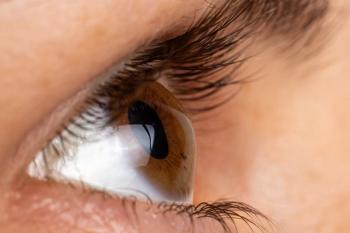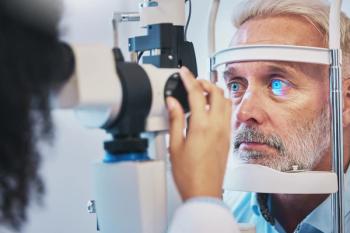
How oral and dental hygiene plays a role in glaucoma
In the past couple of years, there has been discussion regarding dental and oral health-specifically the oral biomicrome-as possibly having a relationship to glaucoma.
Every so often an Internet advertisement for a life-longevity quiz may pop up on the side bar of a webpage. Some questions seem practical, such as family history or frequency of wellness examinations.
Other questions, such as frequency flossing one’s teeth, may appear to have more of a correlation to longevity rather than a causal relationship-at least upon first glance.
Case study selection process
In the past couple of years, there has been discussion regarding dental and oral health-specifically the oral biomicrome-as possibly having a relationship to glaucoma.
A case-control study was recently published in the Journal of Glaucoma indicating a potential relationship between bacterial flora in the oral cavity and the presence of glaucoma.1
Some 119 adult subjects with primary open-angle glaucoma, as defined by visual field and optic nerve head qualifiers, were included in the study, as were 78 control subjects without glaucoma.
Previously from Dr. Casella:
No history of ocular hypertension and no frank optic nerve head cupping or asymmetry were some of the qualifying criteria for the control group.
Mouthwash samples from 28 African-American subjects (the largest racial group of the study) and 17 control subjects were tested for the presence and amount of bacterial DNA (which can be interpreted as the bacterial load).
Casual or correlation?
Outcome measures included:
• Number of remaining natural teeth of the subjects
• Self-reported dental and oral health history
• Dental habits
• Presence along with the amounts of different oral bacterial species
Presence of hypertension and diabetes was also examined. The case group and control group had similar incidences of each of these conditions.
The mean ages of the case and control group were also similar.
The case group (the group with primary open-angle glaucoma) had fewer remaining natural teeth than the control group. From this, it can be surmised that having more natural teeth may indicate a lesser chance of having glaucoma.
The next question: Is this supposed relationship causal or a simple correlation?
Presence of Streptococcus species was significantly higher in the case group than in the control group. This again raises the question if this relationship is causal or correlative in nature.
Related:
Bacteria is a catalyst
Poor oral health and the resulting presence of oral inflammation has been implicated as having a possible causal relationship with more than one condition, such as Parkinson’s Disease.2
This pilot study does well to point out the fact that the elevated presence of certain bacterial species in the oral cavity can, and does, serve as a catalyst for a pro-inflammatory response on the part of the immune system.
On a cellular level, the presence of inflammation may lead to stress (especially oxidative stress) on tissues and subsequent damage. This relationship of inflammation to cellular stress has been described in the cells of the trabecular meshwork.3
Related:
Study discoveries
Although this study is a pilot study, it does well to continue a conversation as to just what causes glaucoma (specifically primary open-angle glaucoma).
We have seen great advancements in the arena of glaucoma diagnostic instrumentation. This includes imaging of the ganglion cell complex in the macula and progression of algorithms which can detect worsening of glaucoma down to just a few microns.
We still have much work to do on the therapeutic side of glaucoma, and there are potential advancements on the horizon. However, at this point, we have yet to discover any therapeutic approach to dealing with this complex and multifactorial disease which should come before lowering intraocular pressure.
Further investigational studies regarding a relationship between oral and dental hygiene and the incidence of glaucoma need to take place. If such a relationship exists, and was found to be at all causal in nature, then we as ODs would have something specific to help us guide our patients-other than just advocating for routine physicals and an overall healthy lifestyle.
Such insights into the potential causes of glaucoma on a cellular/molecular level may have the potential to lead to novel concepts in highly targeted, and highly individualistic, glaucoma therapies in the future.
Related:
References
1. Polla D, Astafurov K, Hawy E, Hyman L, Hou W, Danias J. A Pilot Study to Evaluate the Oral Microbiome and Dental Health in Primary Open-Angle Glaucoma. J Glaucoma. 2016 Nov 4. DOI: 10.1097/IJG.0000000000000465.
2. Kaur T, Uppoor, A, Naik D. Parkinson's disease and periodontitis-the missing link? A review. Gerodontology. 2016 Dec;33(4):434-438.
3. Itakura T, Peters DM, Fini ME. Glaucomatous MYOC mutations activate the IL-1/NF-KB inflammatory stress response and the glaucoma marker SELE in trabecular meshwork cells. Mol Vis. 2015 Sep 17;21:1071-84.
Newsletter
Want more insights like this? Subscribe to Optometry Times and get clinical pearls and practice tips delivered straight to your inbox.













































